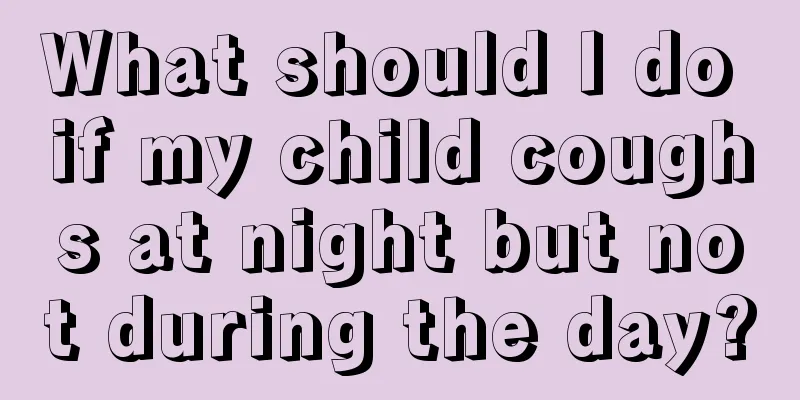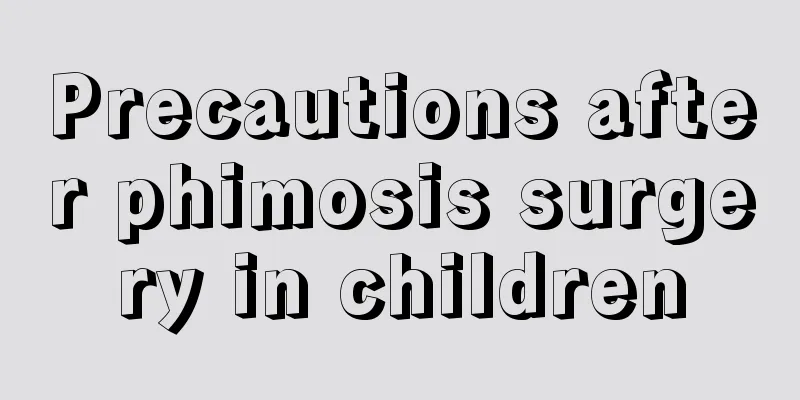Does a child need surgery for appendicitis?

|
Appendicitis in children is also relatively common in life. Among them, children aged 6 to 12 are the most common to suffer from appendicitis, and acute appendicitis is the most common. Acute appendicitis in children develops rapidly. In the early stages, high fever, vomiting and other symptoms usually appear, and complications are also very common. Acute appendicitis in children is the easiest to be misdiagnosed. Many parents think that since their children are young, it is best not to undergo surgery for appendicitis. In fact, this is not true. The following specifically introduces whether children should undergo surgery for appendicitis. Surgery is currently the standard treatment for appendicitis in children. However, over the past decade, the treatment and surgical management of appendicitis have been critically evaluated, with general anesthesia, surgical trauma, postoperative complications, parental anxiety, and socioeconomic factors all posing challenges to appendectomy. For simple acute appendicitis that meets specific conditions, non-surgical treatment has gradually become the main treatment method. So what is non-surgical treatment? Which children can undergo non-surgical treatment? What is non-surgical treatment? Surgical treatment of acute appendicitis has a history of more than 100 years. However, there has always been controversy over whether surgical treatment should be performed for acute simple appendicitis in children. Current guidelines generally believe that all types of acute appendicitis should be treated surgically as early as possible, especially acute appendicitis in children. In principle, surgery should be performed as soon as possible once the diagnosis is confirmed. However, some surgeons believe that for simple appendicitis with a short course and limited symptoms, symptomatic support and conservative treatment with antibiotics can be tried. Nonsurgical treatment of simple appendicitis generally includes fasting and intravenous rehydration in the hospital to relieve nausea and vomiting; single or combined use of broad-spectrum antibiotics until symptoms are relieved, various examinations improve, and the child starts to eat; analgesics can be used prudently without masking the condition. If the child's symptoms resolve (usually within 48 hours), they can be given oral antibiotics for 7-10 days and discharged to outpatient follow-up. Which children with appendicitis can be treated non-surgically? The diagnosis of uncomplicated appendicitis in children is usually based primarily on clinical symptoms, history, and duration. Symptoms generally last for less than 36 hours, with a history of abdominal pain that migrates from the umbilicus to the right lower abdomen. Physical examination shows a soft abdomen with limited peritoneal irritation signs. There is nausea, vomiting, anorexia, low fever, elevated white blood cell count, and elevated inflammatory markers. Ultrasound examination confirms that the appendix is non-compressible, tubular in structure, without fecal stone obstruction, and the lumen is 0.8-1.1 cm. In addition, the use of an appendicitis scoring system can help differentiate simple from perforated appendicitis. For children who cannot be identified by ultrasound examination, abdominal CT scan is recommended, but there is a certain risk of radiation exposure. If financial conditions permit, MRI examination can also be considered. What are the advantages of non-surgical treatment? Compared with the anesthetic risks and postoperative complications associated with surgical treatment, nonsurgical treatment of appendicitis in children has many benefits. Preliminary studies have confirmed that non-surgical treatment of simple appendicitis in children is safe and effective. There is growing evidence that non-surgical treatment can significantly reduce medical costs and improve the satisfaction of children and their families. By collecting clinical information, quality of life of children, and long-term follow-up of treatment prognosis, a prospective cohort study involving 11 children's hospitals showed that the success rate of non-surgical treatment was as high as 89.2% (within 30 days of treatment); the incidence of complicated appendicitis was as low as 2.7%, while that of surgical treatment was 12.3%. After one year of follow-up, the number of days in which the non-surgical treatment group was unable to carry out normal activities was significantly reduced compared with the surgical treatment group (8 days vs. 21 days), and medical expenses were also significantly reduced. In summary, appendectomy remains the standard treatment for appendicitis, but for children with simple appendicitis who meet the clinical criteria, non-surgical treatment has to be said to be a realistic and wise option. Strictly grasping the indications, the patient's decision, the reasonable expectations of the family, effective communication between doctors and patients, and a comprehensive treatment plan are the keys to the success of non-surgical treatment. |
<<: What medicine should children take if they have worms in their stomach?
>>: What to do if your child has internal heat
Recommend
What are the dangers of insufficient sleep for teenagers?
For teenagers, healthy growth is the most importa...
Baby choked on banana
Many people like to eat bananas because they tast...
Port wine stain on baby's head
Every child is a lovely little angel, born with t...
The child has a fever
There are many reasons why children have fever al...
What kind of sports are good for children?
We all know that children and the elderly are rel...
Why does my baby keep waking up?
The joy of being a mother for the first time is w...
Little boy urinates painfully
Raising a boy at home is a very worrying thing. G...
What is the best age for weaning babies?
We all know that breastfed babies have stronger b...
Why does the baby cry when he pees
Friends who have taken care of babies know that b...
What are the fruit juice combinations for children?
As we all know, fruits are rich in nutritional va...
What is the reason for a two-year-old baby to have a fever and convulsions?
Families are most worried about their children ha...
Why are the soles of children's feet yellow?
There are many diseases in the human body. Some d...
What causes a four-month-old baby to cry when sleeping at night?
Recently a mother came to ask the editor that her...
Can babies eat fish if they have phlegm? Parenting experts tell you the answer
Parents, please take note: if your baby has phleg...
What to do if you find your child masturbating
Masturbation is a normal behavior in children'...









